Key takeaways:
- Climate anxiety stems from a disconnect between knowledge of environmental issues and emotional responses, leading to feelings of helplessness and guilt.
- Environmental education bridges the gap between awareness and action, empowering individuals to make sustainable choices and engage with their communities.
- Coping mechanisms such as mindfulness, connecting with nature, and community involvement can alleviate climate anxiety and foster a sense of purpose.
- Community action, like tree planting and clean-up events, builds resilience and strengthens connections, emphasizing collective responsibility for the environment.
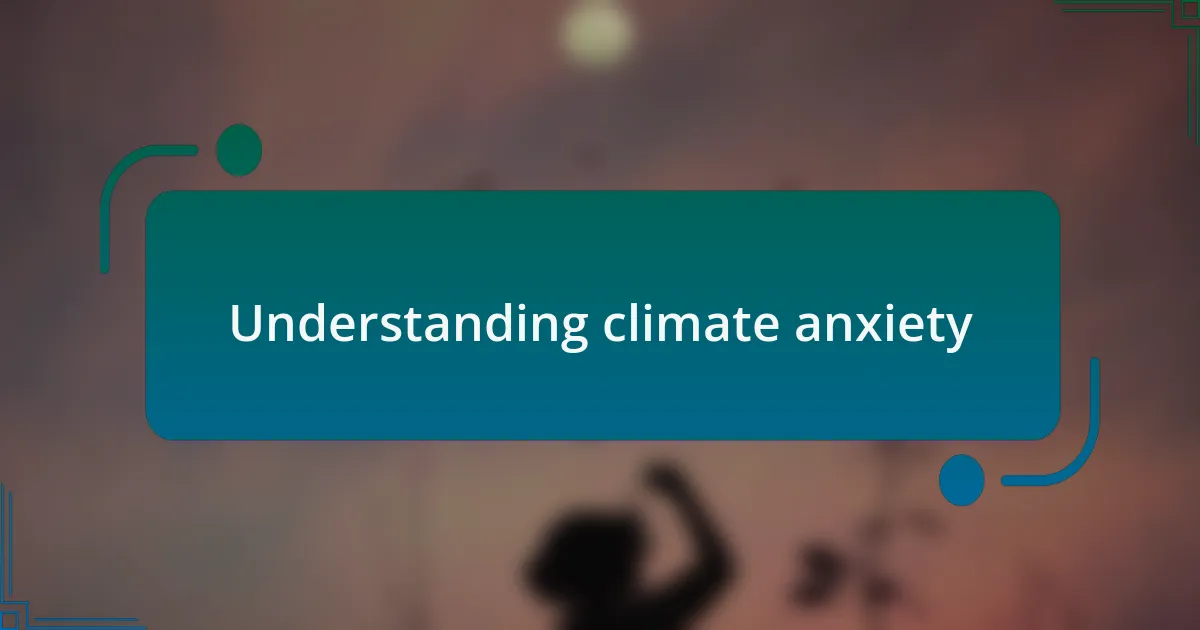
Understanding climate anxiety
Climate anxiety can be a heavy weight to bear. I remember the first time I felt it, standing in front of a frozen lake, knowing that the signs of climate change were creeping into even the most pristine environments I cherished. It makes me wonder, how many others share this overwhelming sense of helplessness when faced with the reality of our warming world?
This feeling often stems from a profound disconnection between facts and emotions. As I read alarming statistics about rising sea levels, I couldn’t help but feel a gnawing fear for the future. It’s fascinating how knowledge can create a chasm between what we know and how we truly feel. Why does the heart react so intensely to numbers and predictions, especially when it comes to the fate of our planet?
Unpacking this emotional maze can be daunting. A friend once told me that she feels guilty for her everyday choices, from driving to using plastic. It’s a common sentiment, but isn’t it vital to channel that anxiety into actionable steps? I find it empowering to transform those anxious moments into motivation for change, both personally and within my community.
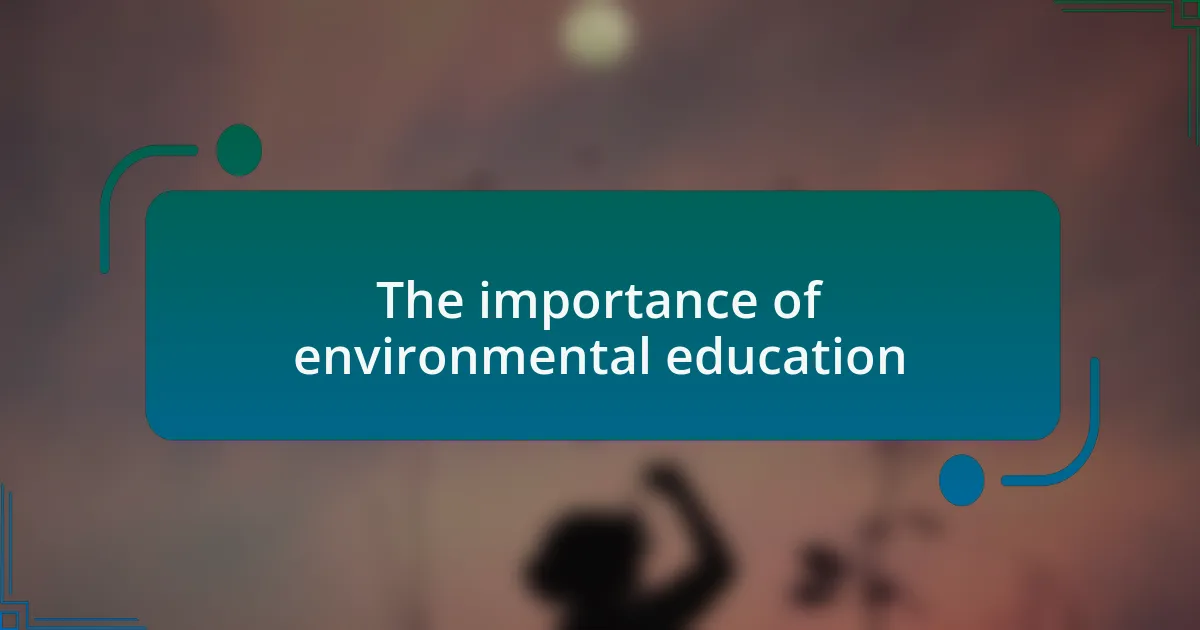
The importance of environmental education
Environmental education plays a crucial role in bridging the gap between knowledge and action. I still recall a workshop I attended that opened my eyes to sustainable practices I hadn’t considered before. It was transformative to learn that even small changes, like swapping plastic straws for metal ones, could make a significant impact. Isn’t it uplifting to think that every individual can contribute to a larger solution?
Through education, we’re not just absorbing facts; we’re building a community of informed individuals ready to tackle climate issues. I remember discussing environmental policies in my local community center and how invigorating it was to see people become passionate about what they learned. It’s a reminder that education fosters engagement, igniting a desire to act collectively.
Moreover, understanding our environment can alleviate some of that climate anxiety we discussed earlier. When I dive into a project on native plant restoration, I find that immersing myself in positive action helps counterbalance my worries. Could it be that the antidote to our anxiety lies in taking informed steps forward? Engaging with environmental education gives us the tools to challenge the overwhelming narratives and inspires confidence in our collective future.
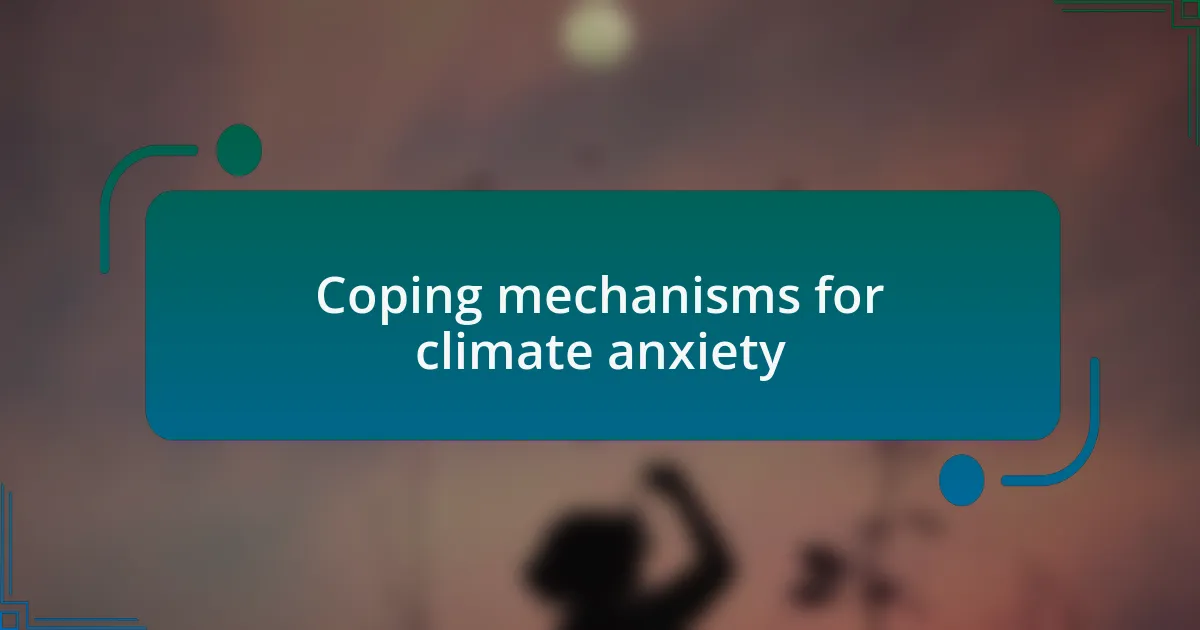
Coping mechanisms for climate anxiety
When it comes to coping with climate anxiety, one of the most effective strategies I’ve found is cultivating a practice of mindfulness. I still remember a particularly overwhelming day when I felt paralyzed by fear for the planet’s future. Taking a moment to breathe deeply and focus on the present helped ground me. Have you ever noticed how simply being in the moment can shift your perspective? It’s like hitting pause on the chaos around us.
In addition to mindfulness, I’ve learned that connecting with nature can be incredibly restorative. I often spend weekends hiking in nearby forests or volunteering for local clean-up events. The tranquility of the trees and the joy of contributing to a healthier environment provides a much-needed release from anxiety. Isn’t it amazing how being surrounded by nature can have a calming effect on our minds? For me, it’s a reminder of what we stand to protect.
Another coping mechanism that I’ve embraced is community engagement. Attending climate rallies and joining local environmental groups has fostered a sense of purpose and connection. I recall my first rally—surrounded by passionate individuals who shared my concerns felt like finding a new family. Have you ever experienced that sense of unity? It’s empowering to realize we’re not alone in our worries, and together, our voices can drive change.
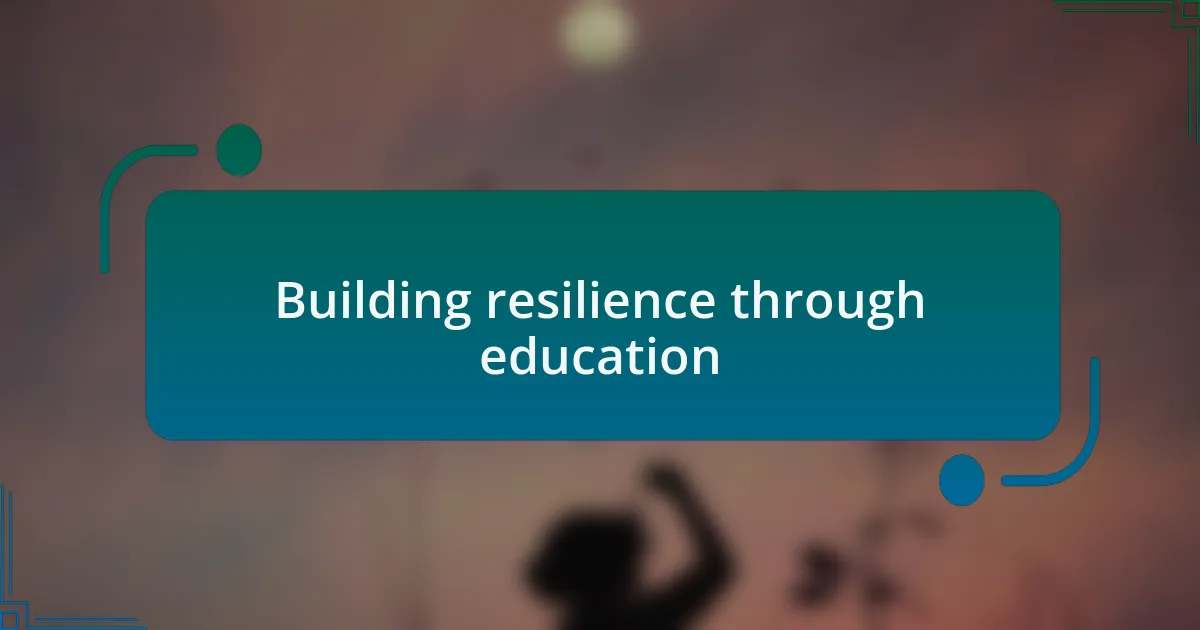
Building resilience through education
Building resilience through education is vital in addressing climate anxiety. I remember attending a workshop on sustainable practices and how it transformed my outlook. Learning about practical solutions gave me hope, as I realized that small, informed actions could lead to significant change. Have you ever felt a spark of inspiration when presented with new knowledge?
Through education, we can empower ourselves and others. For example, when I volunteered to teach a class on climate change for kids, their awe and curiosity reminded me of why we must continue sharing what we learn. Each question they asked was a nudge, encouraging me to dig deeper into the subject. Isn’t it invigorating to see how learning can inspire the next generation to care deeply about our Earth?
Ultimately, resilience comes from understanding the challenges we face and acknowledging our power to respond. I’ve participated in community forums where discussions ranged from local initiatives to global movements. The shared insights and diverse perspectives not only eased my anxiety but also cultivated a supportive environment. Don’t you think that together, we can foster a more resilient mindset through collective knowledge?
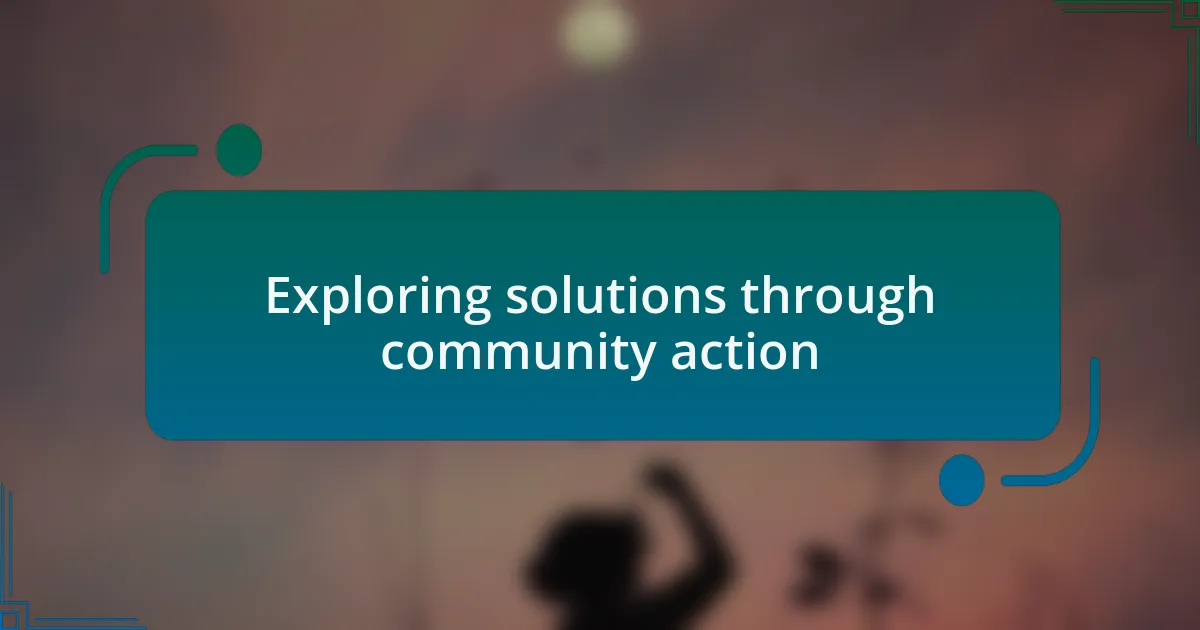
Exploring solutions through community action

Exploring solutions through community action
Community action has always been a powerful force for change. I recall when my neighborhood organized a tree-planting event; seeing families come together to restore our local environment filled me with hope. It made me wonder—could small, united efforts be the key to combating our climate fears?
Participating in local clean-up initiatives provided me with a deep sense of purpose. As we gathered trash from the beach, I felt a mix of frustration and determination. Each discarded item we picked up was a reminder of our collective responsibility. Do you feel that same urgency when you see pollution disrupting nature’s beauty? I believe that these hands-on experiences not only alleviate climate anxiety but also create lasting connections within our communities.
Moreover, witnessing the impact of community gardens opened my eyes to sustainable practices that truly make a difference. When I helped tend to our plots, it wasn’t just about growing food—it was about nurturing relationships and fostering a sense of shared stewardship. Isn’t it incredible how cultivating plants can mirror cultivating hope? Through these actions, I’ve realized that together, we can forge pathways to a more sustainable future, easing our concerns about climate change one step at a time.